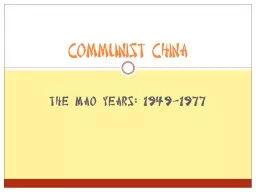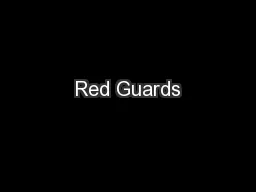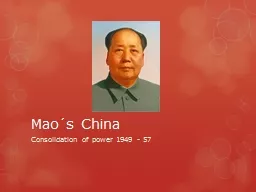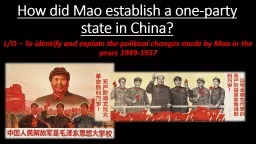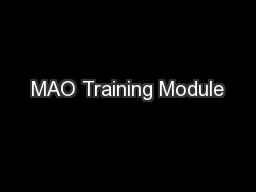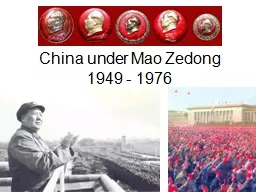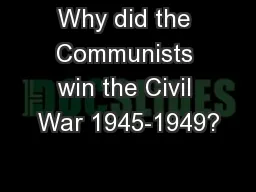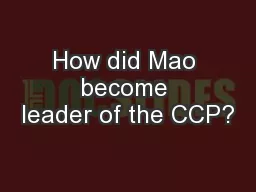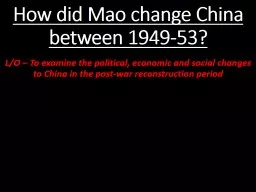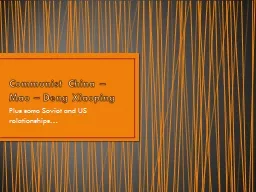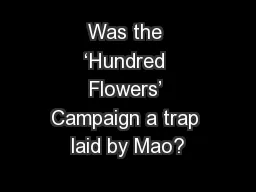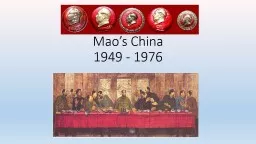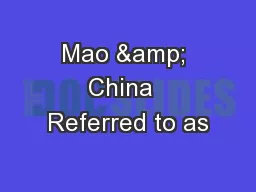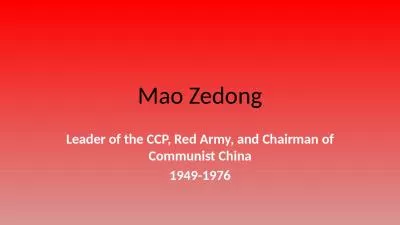PPT-The Mao Years: 1949-1977
Author : calandra-battersby | Published Date : 2018-03-08
Communist China The Good Years 19491958 China Packet III Assignment 1 Assignment 1 New Expectations Once the Nationalists were defeated Chairman Mao Zedong and
Presentation Embed Code
Download Presentation
Download Presentation The PPT/PDF document "The Mao Years: 1949-1977" is the property of its rightful owner. Permission is granted to download and print the materials on this website for personal, non-commercial use only, and to display it on your personal computer provided you do not modify the materials and that you retain all copyright notices contained in the materials. By downloading content from our website, you accept the terms of this agreement.
The Mao Years: 1949-1977: Transcript
Download Rules Of Document
"The Mao Years: 1949-1977"The content belongs to its owner. You may download and print it for personal use, without modification, and keep all copyright notices. By downloading, you agree to these terms.
Related Documents

